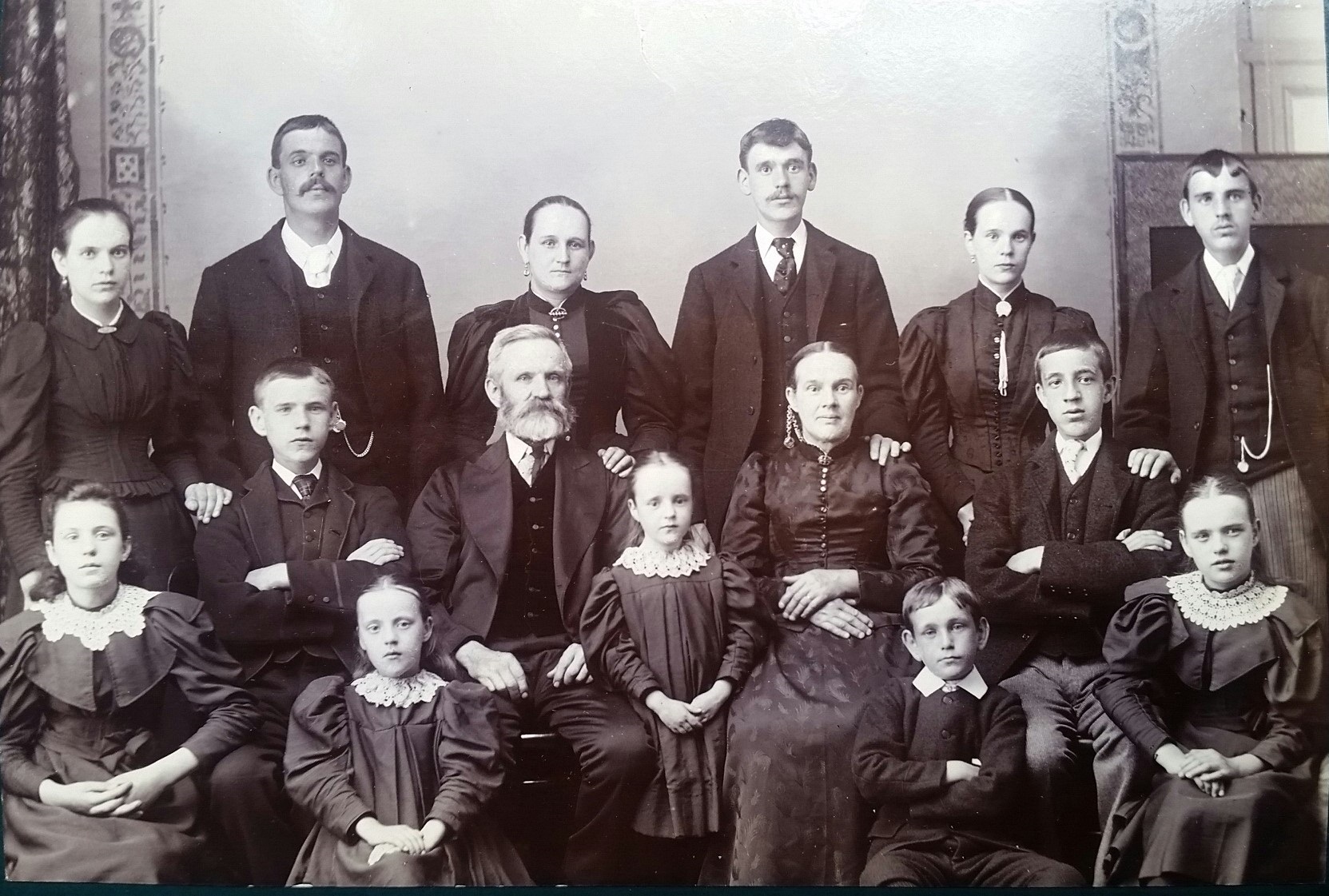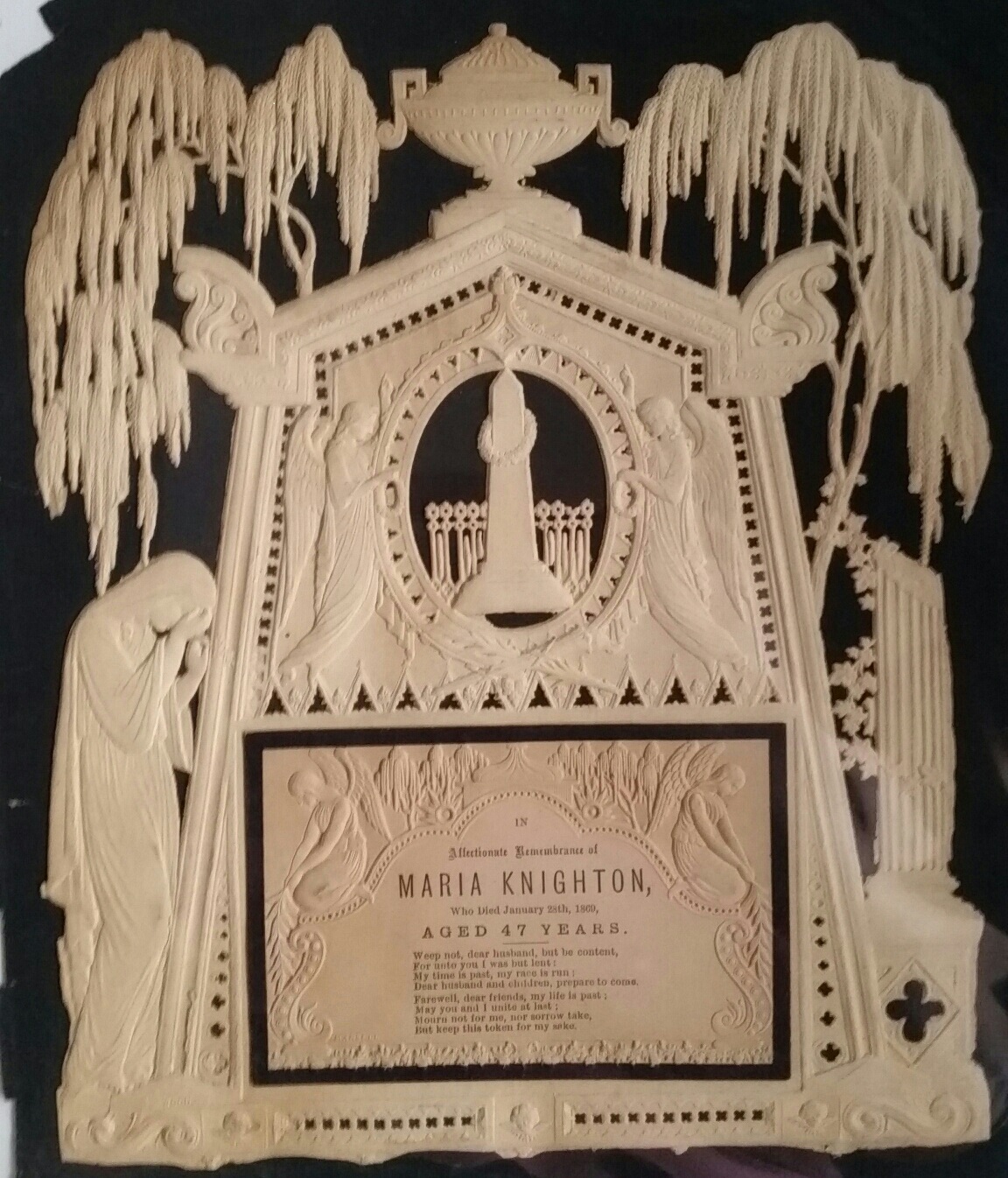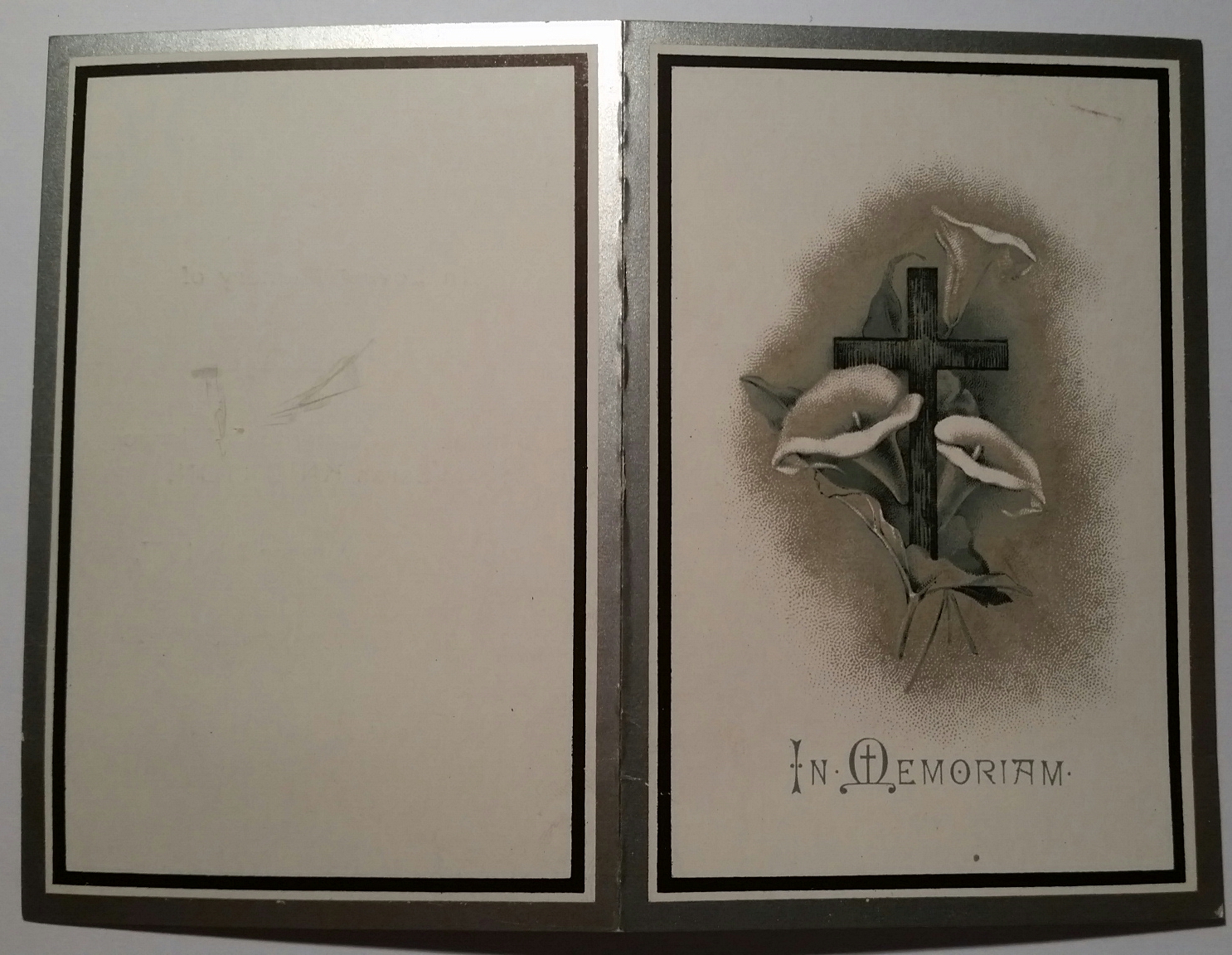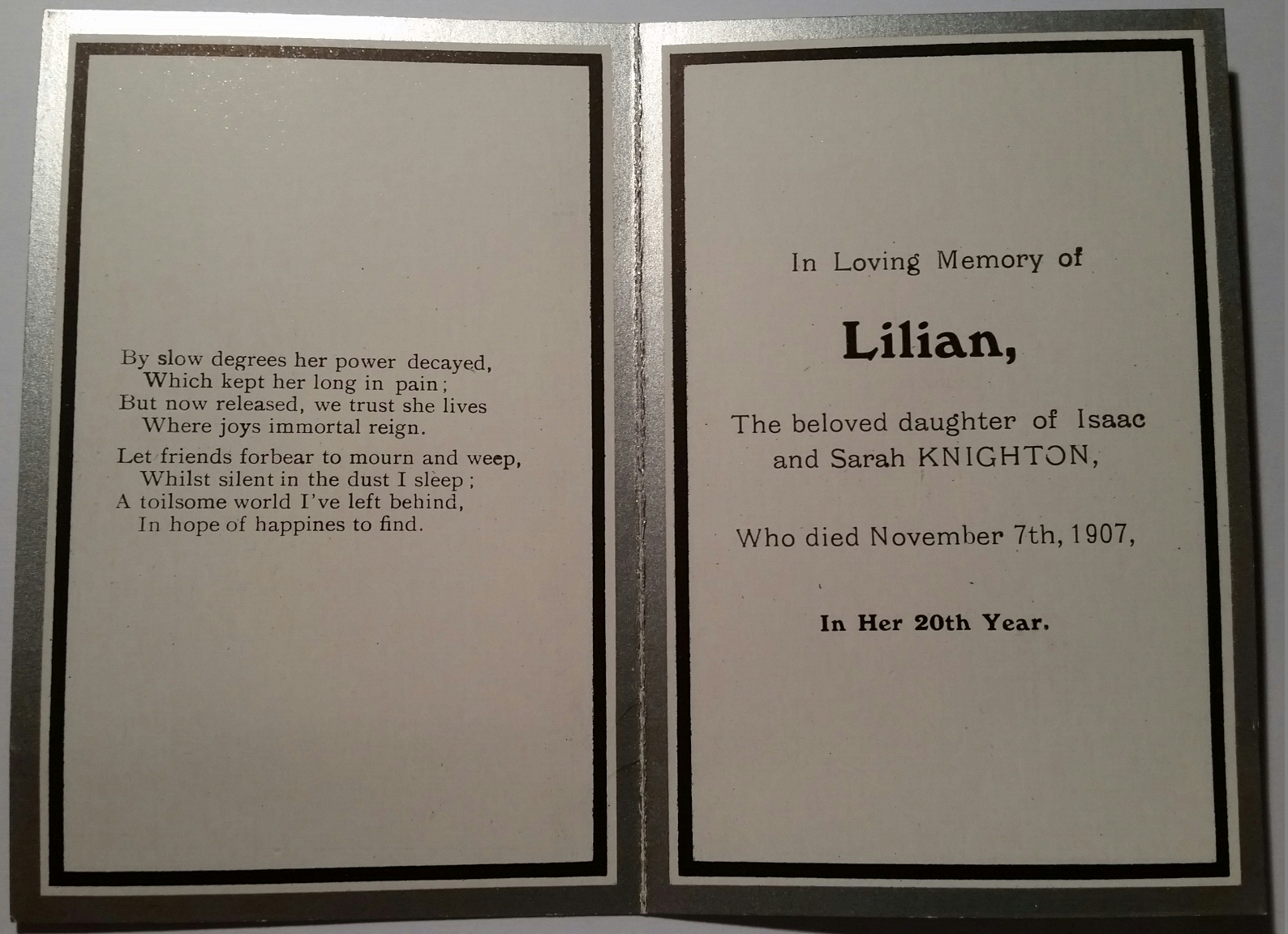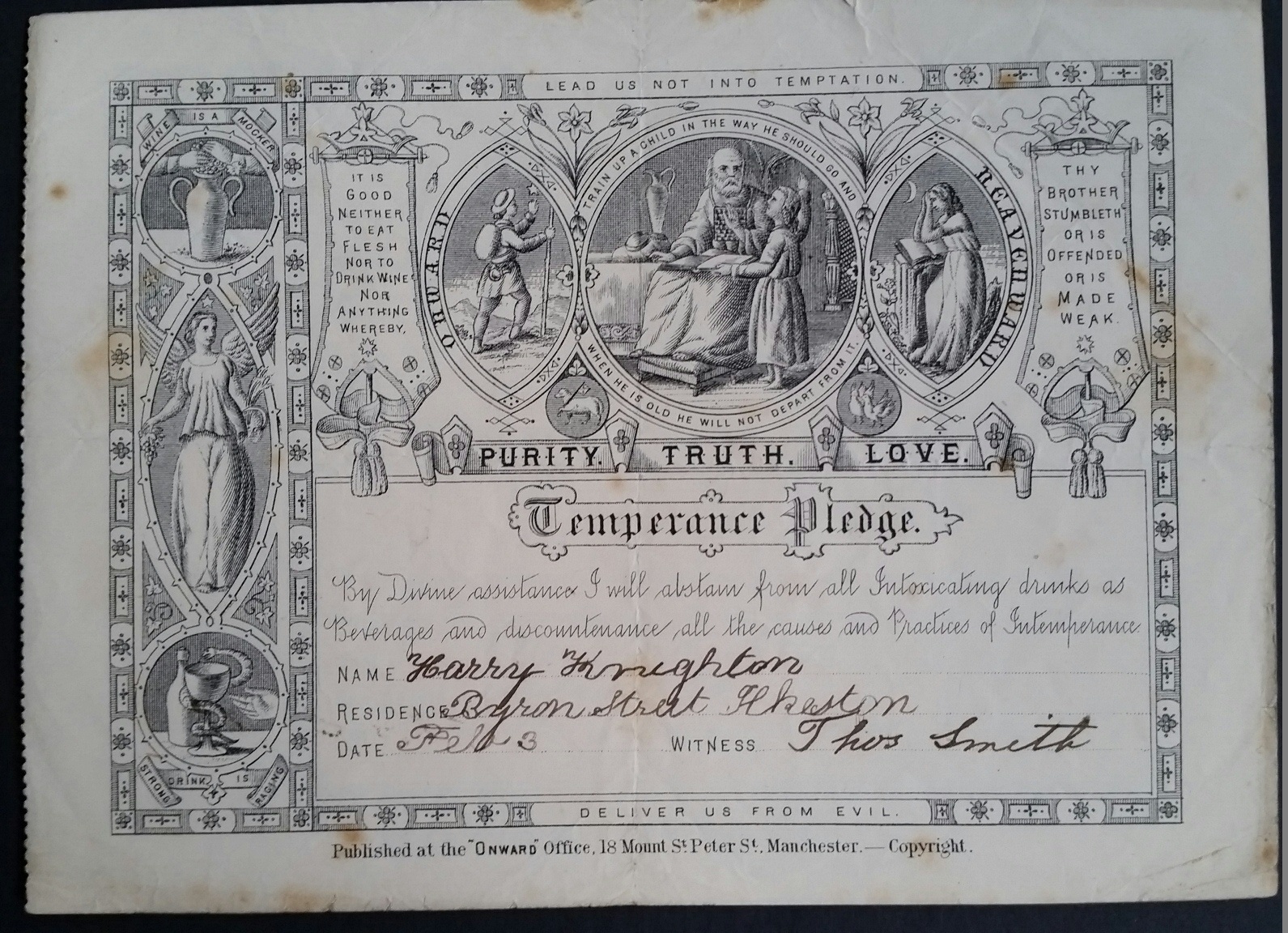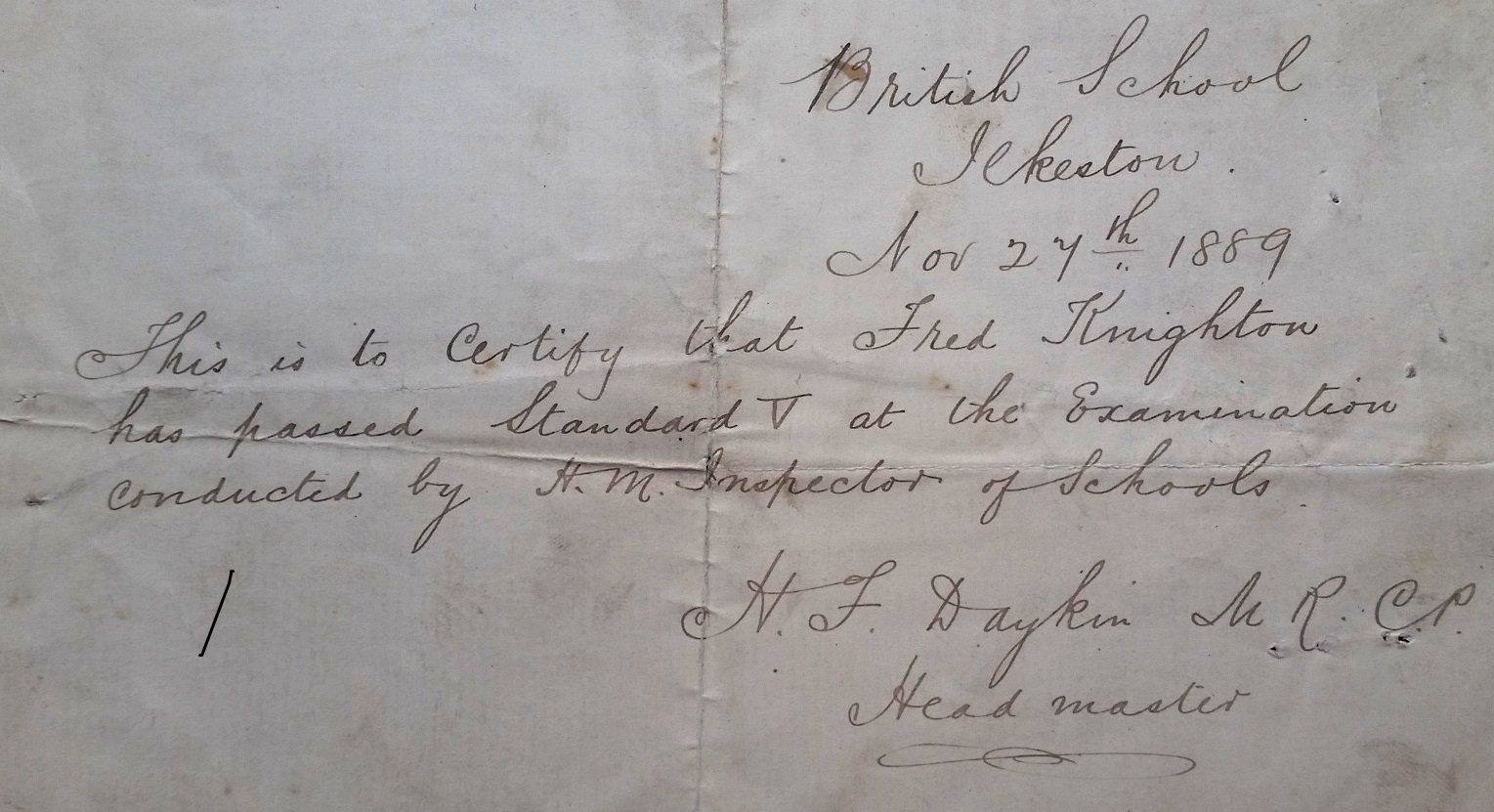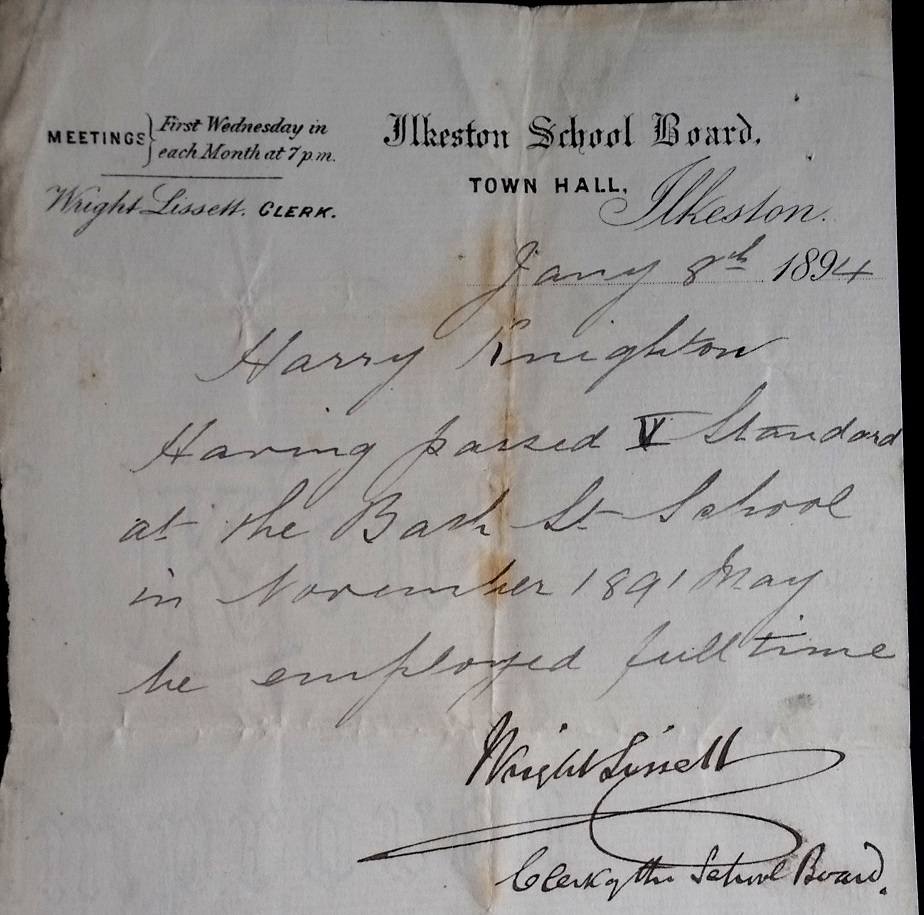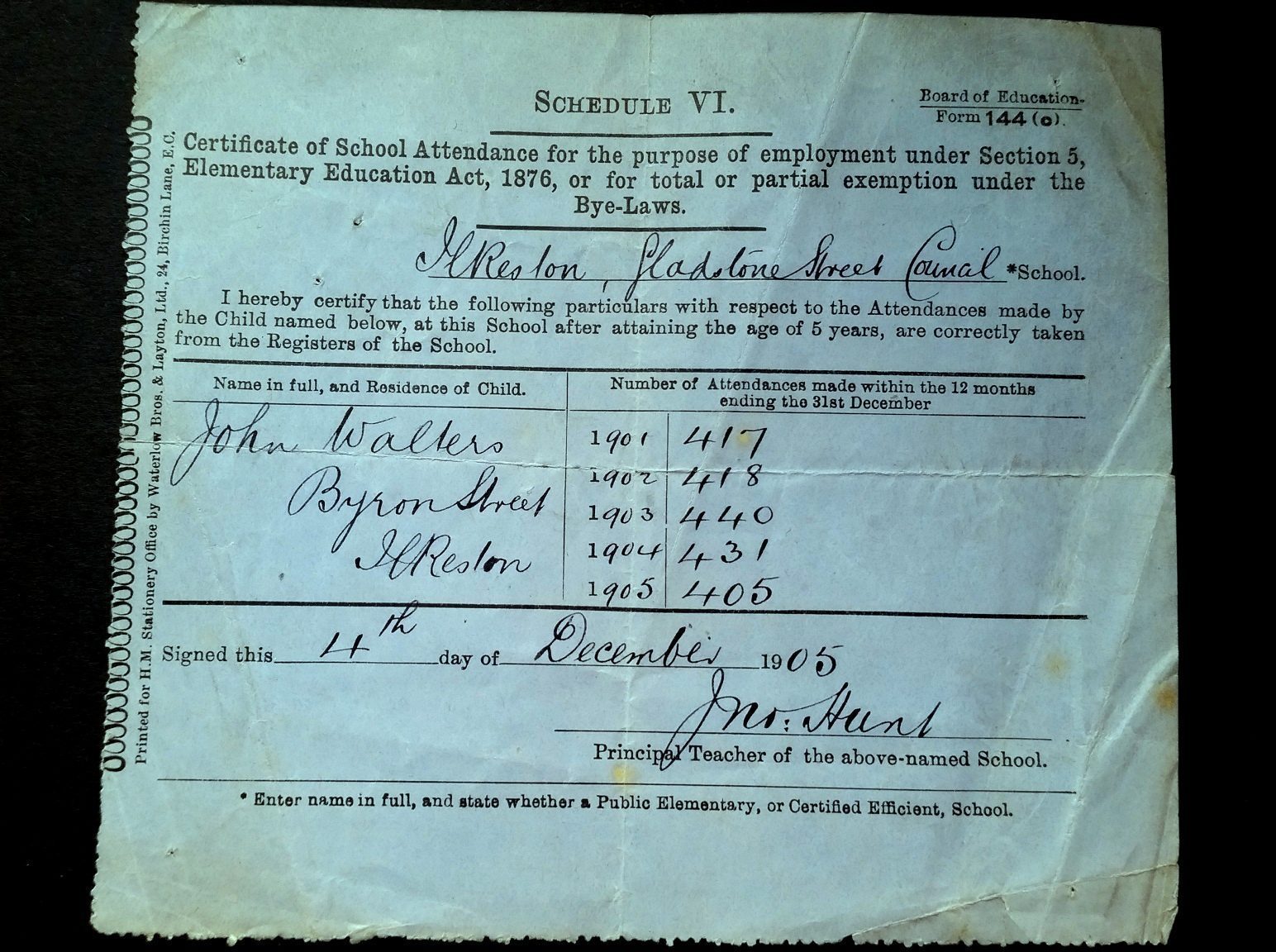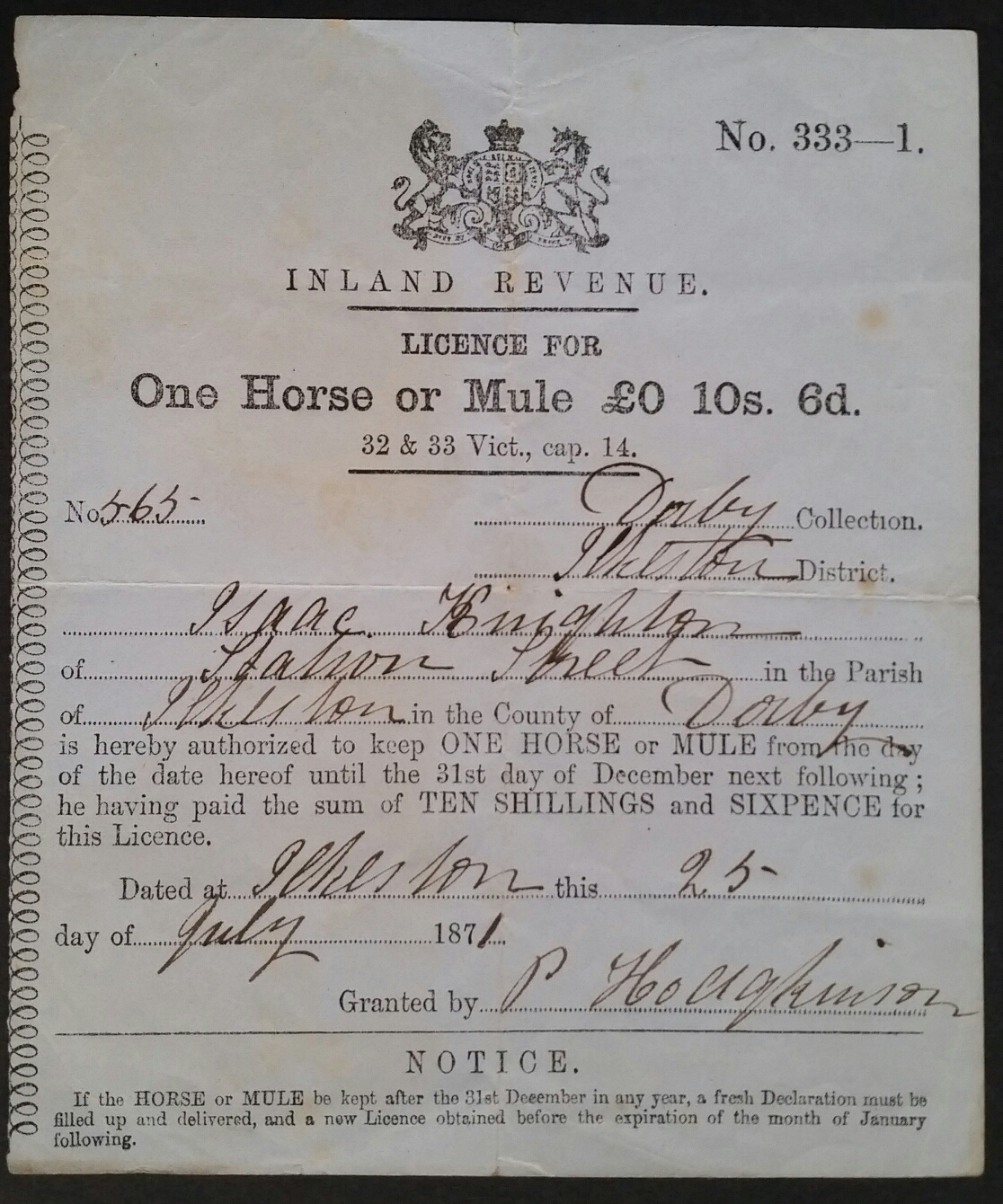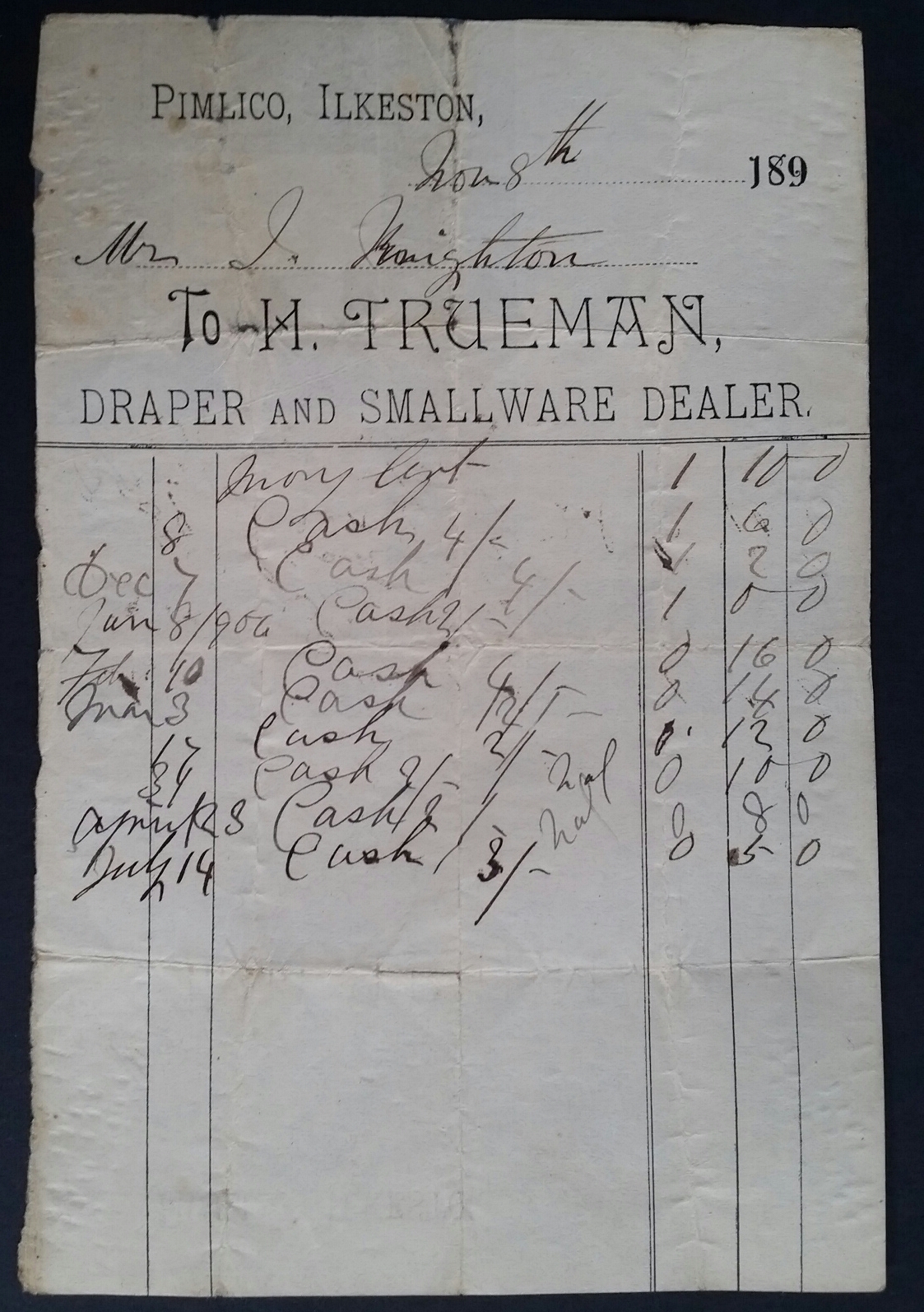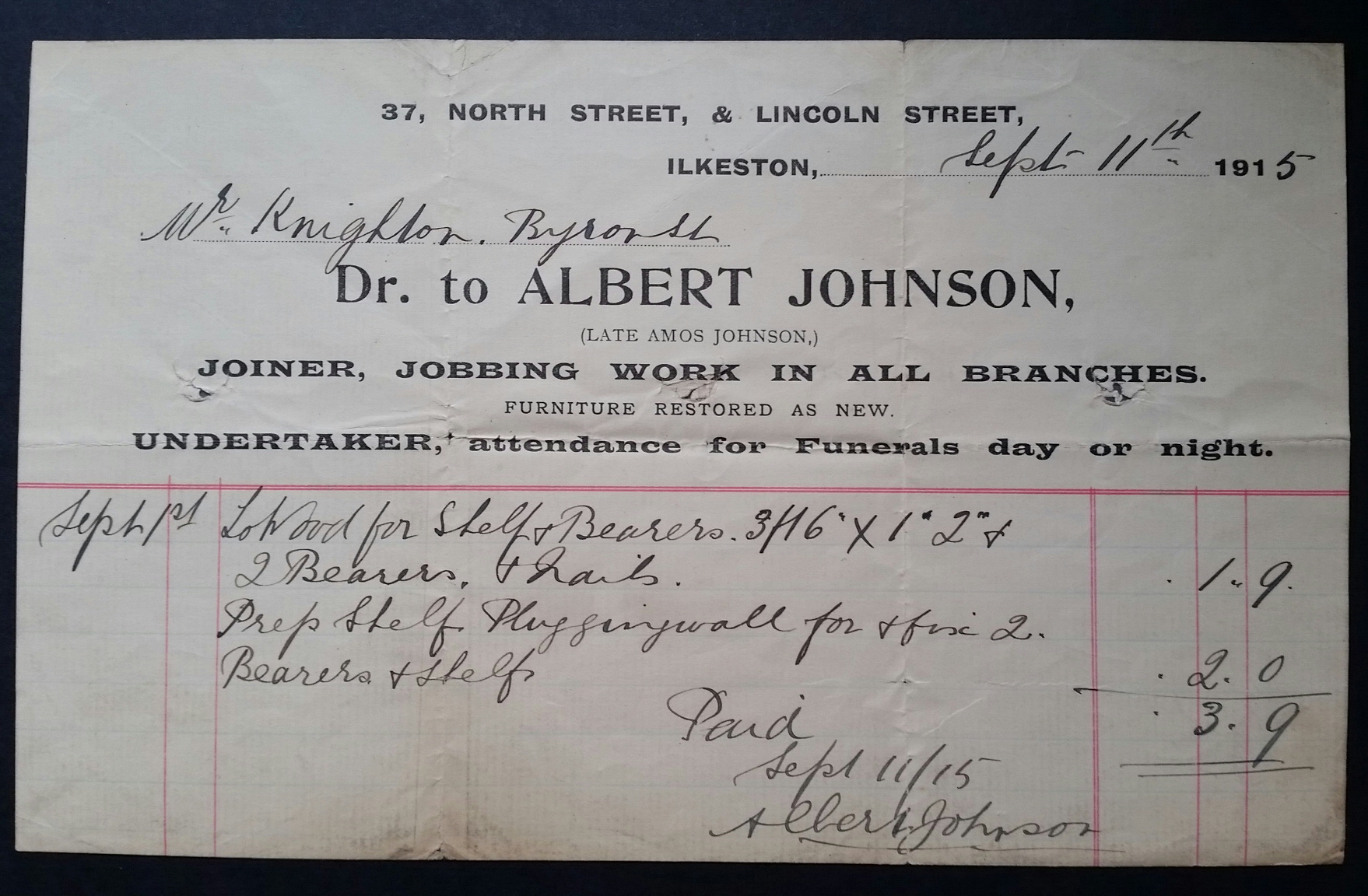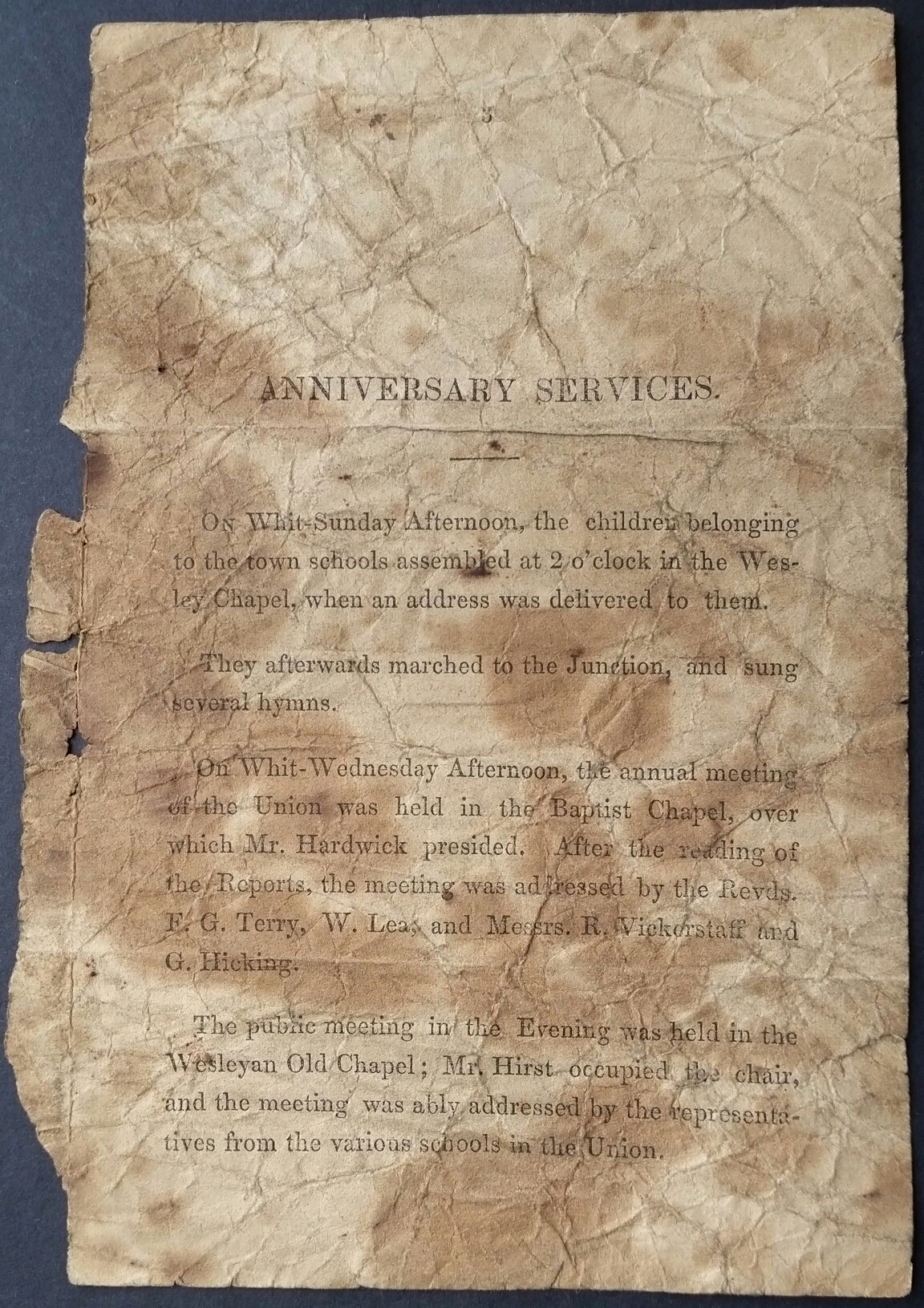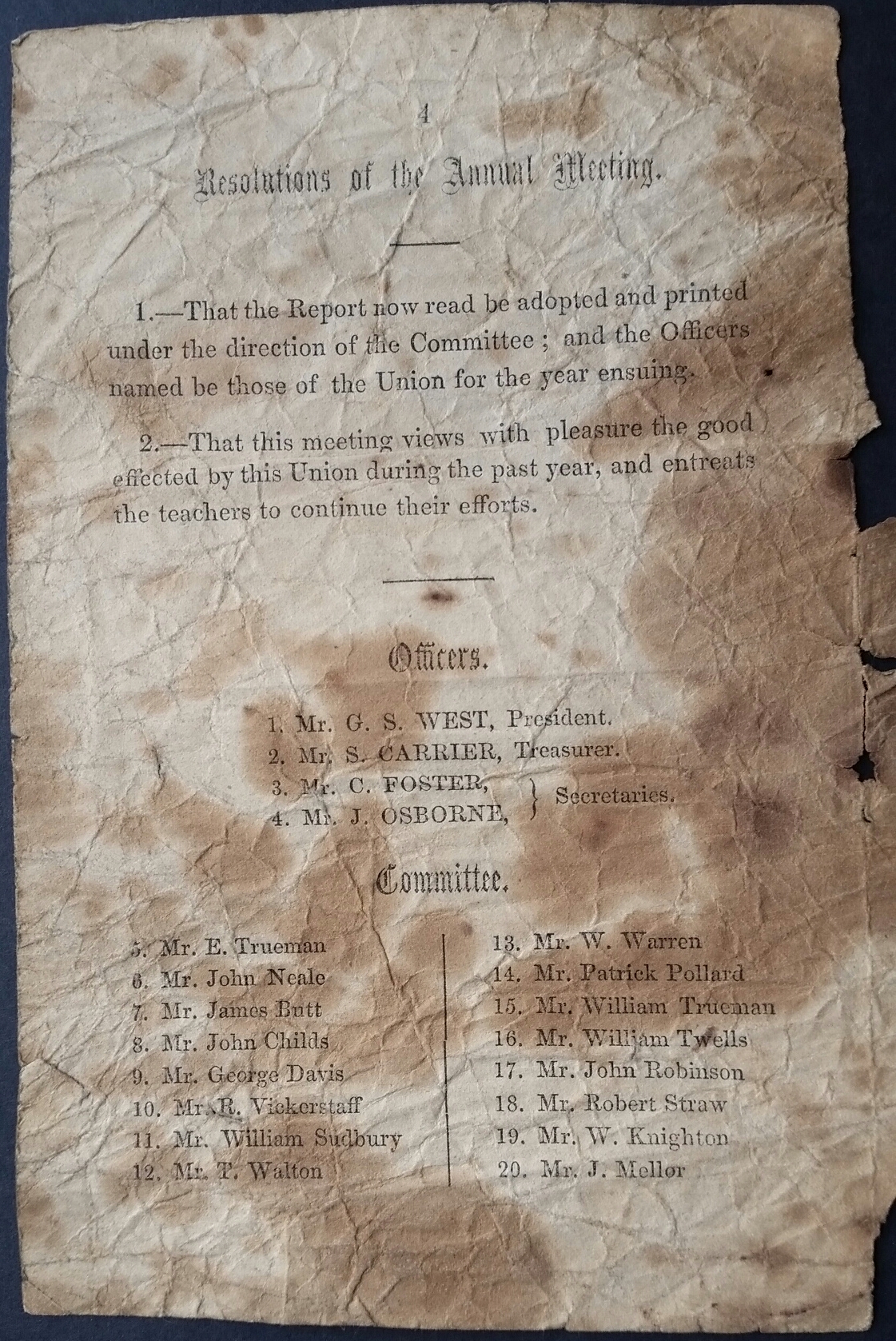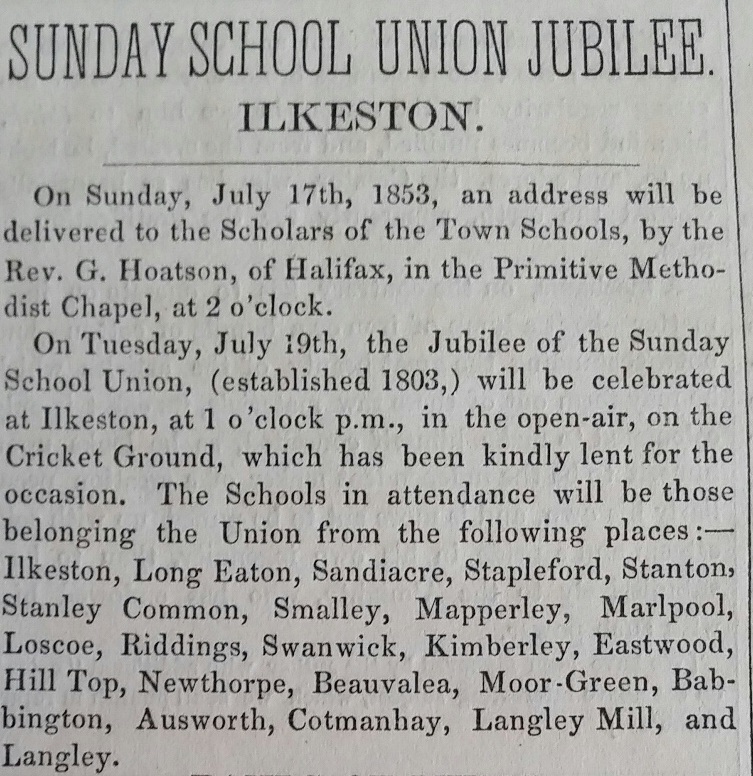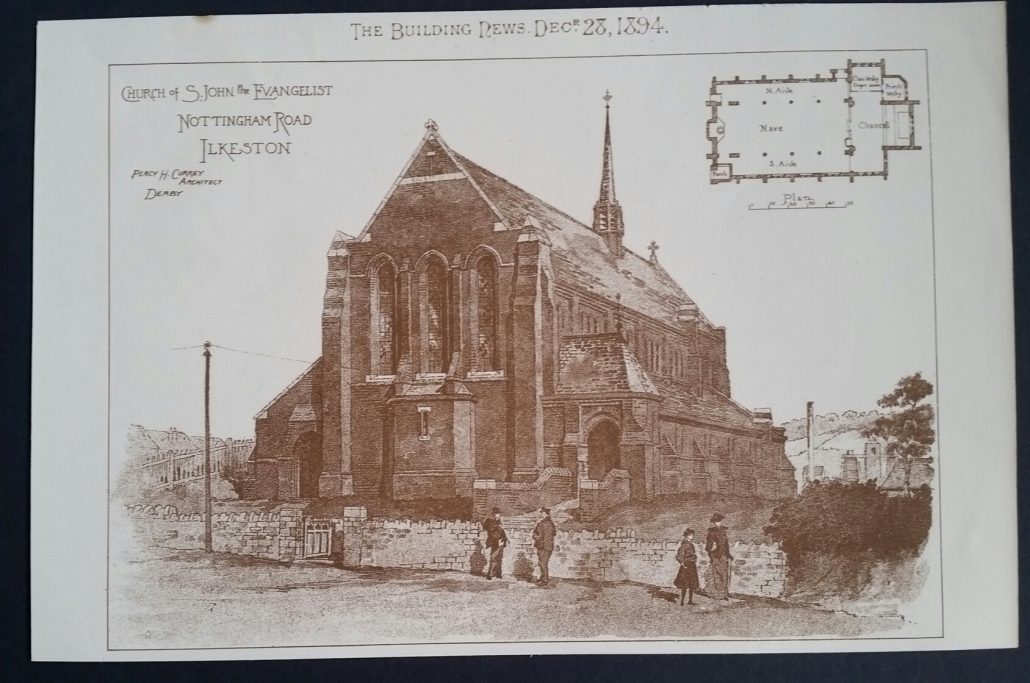Andrew Knighton … introduction
Other publications include: …….
Old Ilson No. 1 (co-author Eddie King)
Old Ilson No. 2 (co-author Eddie King)
Bygone Langley Mill (co-author Bryan Wright)
Bygone Stanton (co-author Danny Corns)
Various calendars in the mid to late 1990s for Ilkeston and Alfreton
Andrew has also supplied images for most of the Ilkeston and District Local History Society’s publications since the late 1980s and in addition, all of the images for the Ilkeston’s Past in Pictures DVD and similar DVDs for Stanton Ironworks, Heanor and Long Eaton.
Andrew is always on the go !! The following accounts are all written by him.
The Knighton family
Attached is a photo that would date to the mid 1890s and shows my great great grandparents, Isaac Knighton and his wife Sarah (formerly Robinson, daughter of John Robinson the Butterley Company’s mine agent) and all of their children, including my great grandfather.
The reason I’ve attached it is because the images of the Primitive Methodist mottos from the 1860s I sent a few days ago belonged to Sarah, my great great grandmother, in the centre.
The photograph is in superb condition, pristine, with no surface marks or fading and great care taken to look after it over the last circa 125 years – it even has the original envelope and also the tissue paper attached to the photo for protection.
Eliza Ann – married Arthur William Henshaw of Cotmanhay, lived on Milton Road.
I have several of his day books from that period listing miners by name and how much they had been paid, along with other notes such as compensation paid to local landowners for workings, train fare expenses to London re. building St. Pancras Station etc. etc.
His youngest of three daughters was Sarah Robinson, my great, great grandmother who married Isaac Knighton, my great, great grandfather in 1864.
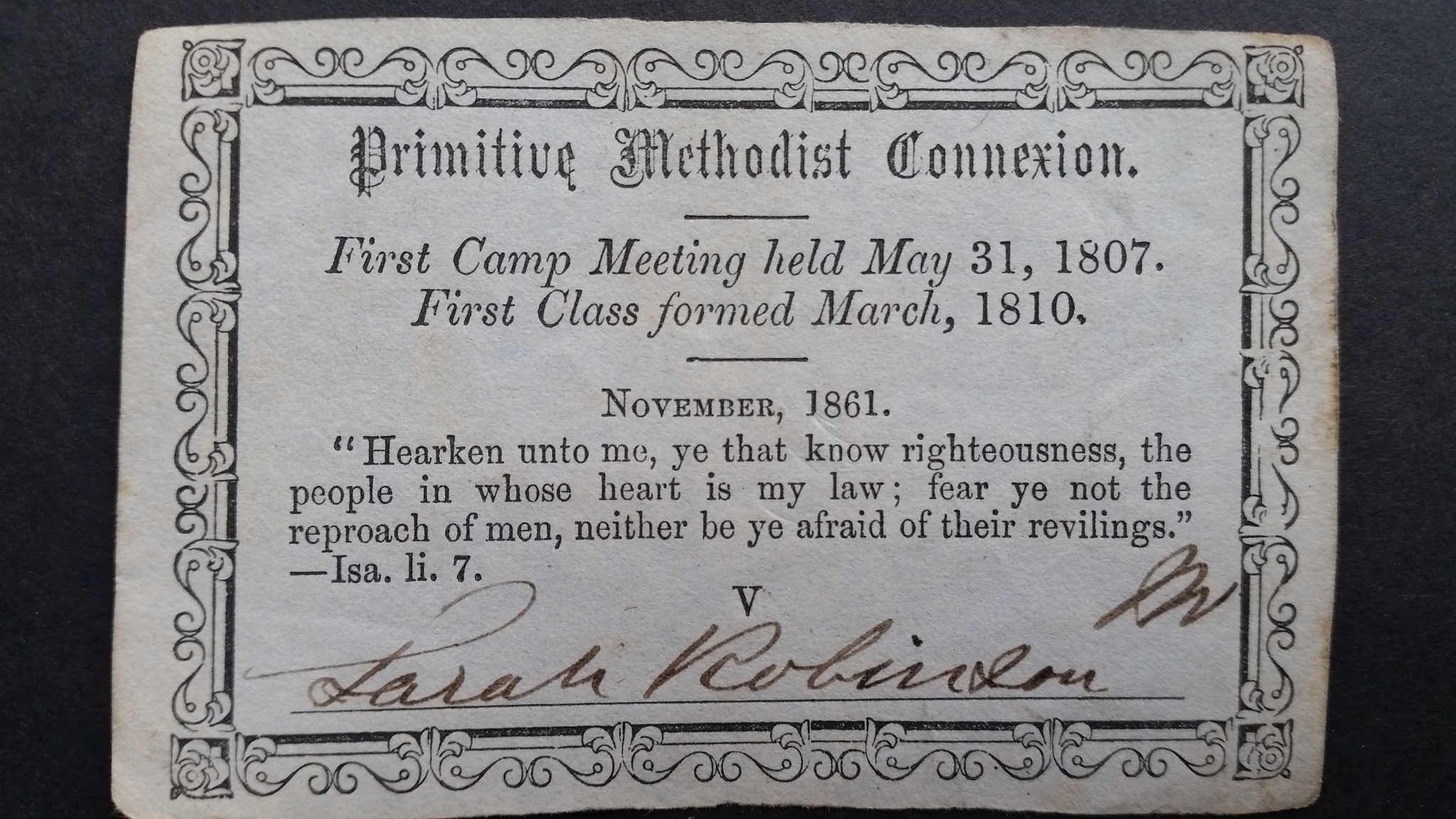
Here are some mottos dating from 1861 (when she was 16) to 1868 that would have been issued to members of the Primitive Methodist members a few years after their move to Bath Street. They were all issued to my great great grandmother as they are personally named, but in different hands, and appear to have been given out on a quarterly basis. I guess a member of the chapel wrote members’ names on these mottos and they were perhaps given out personally to ensure nobody was missed.
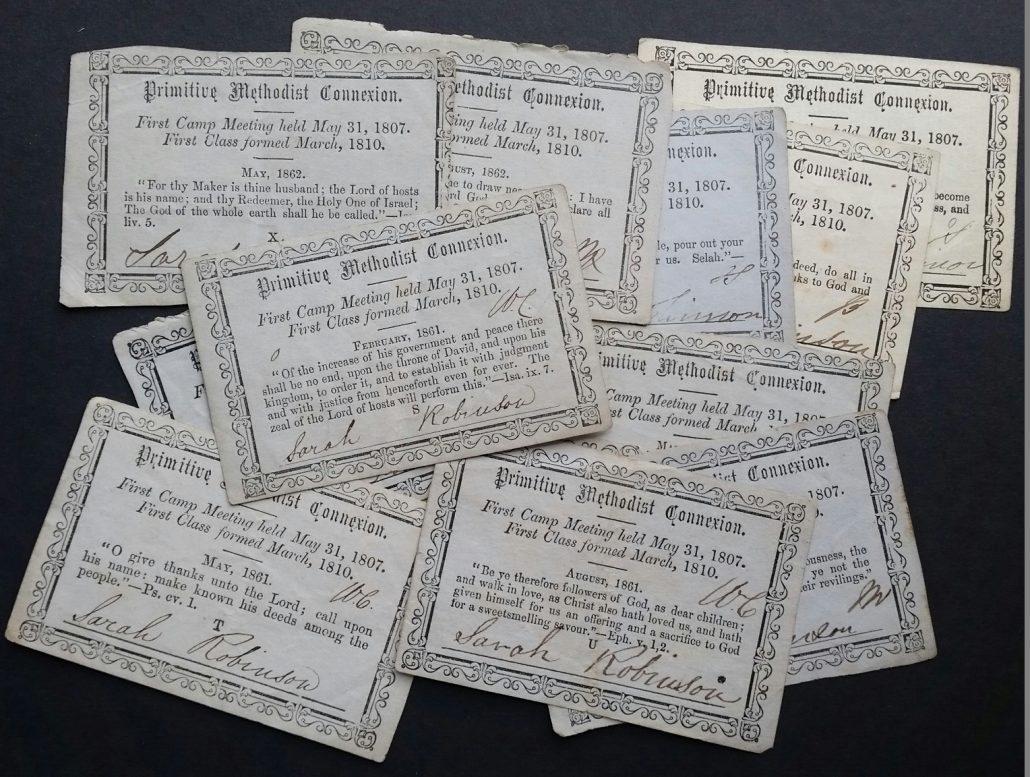
John appears to have moved in with his son-in-law/daughter, Isaac Knighton/Sarah Robinson (centre of the attached image) to 28 New Street after his wife died in 1862. My old relative believed 28 New Street was next door to “Grandpa Shaw’s” (of Shaw the building/construction family), which was either the corner shop where Starr the pawnbroker’s shop stood, or next door, opposite the Erewash Hotel. All of the shops on this side of the road were houses at that time.
An early memorial card and surround for Maria Knighton (my great great great grandmother), dated 1869. This was in a dilapidated picture frame when I acquired it.
The death of Lilian is announced (above photo, middle row)
Lilian was always ill so I was told, and died in 1907 at the age of 20. The funeral director was D. Johnson – only just around the corner from where the family lived, on Byron Street near the Burr Lane end.
P.S. Sadly, looking at the 1911 census when Isaac and Sarah Knighton (my great great grandparents and centre of the family photograph) were living at 28 Byron Street (site of the southbound carriageway of the relief road), they were living alone except for bringing up three of their grandchildren, all sons of their daughter Elizabeth who had died of the cholera outbreak of 1898, a few days before her husband died of cholera too. The census states that of 13 children, only 8 were still alive, a sad sign of the times with disease such as cholera and typhoid.
Temperance pledge – I have several of these for my ancestors, all probably dating from the 1890s. Despite the pledge to abstain from intoxicating drink, they never did. The men all played musical instruments for the Primitive Methodists and always finished up in the pub after they had finished playing.
The two items are school leaving certificates for Fred Knighton (my great grandfather) and his brother, Harry Knighton. (photo above, middle row) They both attended the British School on Bath Street, which used to stand opposite Albion Place, later the site of the Globe Picture House/billiard hall and latterly before demolition, John Collier’s and Gunn’s card shop. There is a distant view, showing the steps up into the school room in the view of the top end of Bath Street, looking down, in Cox and Mason’s Views of Ilkeston, published c.1900.
When my great great grandfather, Isaac Knighton (father of Fred Knighton), attended the British School in the very early 1850s his teacher used to combine teaching with cobbling shoes at the same time. The school was opened in 1845 and cost £780 to build (including land) of which £200 came from a government grant and the rest by voluntary subscription. White’s directory of 1852 states it to be a large brick building with projecting wings, the school being divided by folding doors, the room being 60 feet long, 25 feet wide and 15 feet high, lighted by 8 large windows.
An attendance record for a distant relative of mine when he was at Gladstone Infants School just after 1900.
Horse/mule licence for 1871 issued to Isaac Knighton (my great great grandfather) who lived on ‘Station Street’ at the time – but I’m sure this address should be 28 New Street per the 1871 census. Not sure when New Street became Station Road and was extended but think it was around this time.
————————————————————————————————————
Invoice from H Trueman, draper and smallware dealer, Pimlico, dating from the 1890s (to Isaac Knighton, my great great grandfather).
————————————————————————————————————
Invoice from Albert Johnson of North Street and Lincoln Street, Ilkeston, dated 1915.
———————————————————————————————————————-
Sunday School Union
I’ve attached an image of two pages from a document that I’m fairly certain relates to Ilkeston, despite not naming Ilkeston on it. It came from John Robinson’s papers and was wrapped around a small object to protect it, hence why it’s badly creased – I suppose it shouldn’t exist, as it had already effectively been discarded.
It’s pages 3 and 4 of a larger document and relates to the Sunday School Union.
Although I cannot tie any of the Reverends’ names to Ilkeston, several committee members seem to have been prominent tradesmen in the town, such as Geo. S West, the president, who had a linen and woollen drapery business in the market place; Patrick Pollard, a committee member who was a brazier and tinner, also of the market place; William Twells, committee member, butcher and grazier of Bath Street; and John Robinson, committee member and my ancestor. There is also a mention of the children marching to the Junction on Whit Sunday afternoon to sing several hymns – I believe the Junction was Lower Market Place.
Illustration from The Building News, dated 23rd December 1894, showing the newly built St. John’s Church on Nottingham Road.
I also have a very large photograph of the Primitive Methodist band which my old relative said was taken outside the house of Isaac Potter who headed up the band. It’s predominantly the Shaw, Knighton and Potter men. The house was behind 99 Bath Street (opposite Woolworths) and accessed via an entry by 99 Bath Street, but I’ve never been able to find it on any maps. You might remember 99 Bath Street as the chip shop that only opened odd days, always very busy Saturday lunchtimes, and had no name above it hence we knew it as “99s”. If you had a knife and fork that matched, or matching plate/cup, you were lucky. Also the waitresses seemed to be all well into their 70s, at least. Quite an experience.

